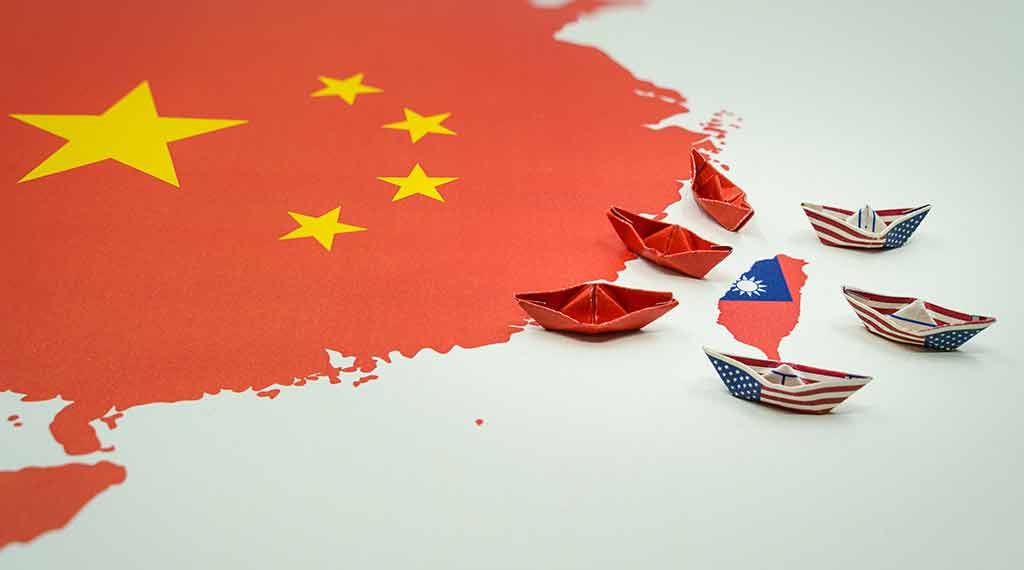In both crises, the Taiwanese showed their determination to stay and defend the island and not to surrender any of their territory. Also in both crises, the U.S. recognized it was compelled to stand with its allies so that the enemy could not employ “salami slicing” tactics—taking small steps to compel territorial change while remaining below an escalation threshold. Today, in a classic “Back to the Future” situation, Kinmen is once again under threat from a PRC invasion. It is quite right to think of Kinmen as the new West Berlin. Just as the U.S. did not let the island fall during the Cold War, it must not fall now in the new Cold War with the PRC.
The PRC has been pressuring Taiwan to withdraw from the islands. It has done this in the wake of two fishermen being accidentally killed during a conflict with Taiwanese authorities. In response, the PRC has announced that the Fujian Coast Guard will now conduct regular patrols between Kinmen and Xiamen, an unambiguous escalation targeted at controlling Taiwan’s waters around Kinmen. These are steps toward either an invasion or a blockade that will strangle the Taiwanese garrison. This is not in isolation. The PRC’s navy routinely violates Taiwanese waters. PRC aircraft are asserting dominance in the Taiwan Strait.
To prevent the success of the PRC’s increasing aggression, five specific actions that should be taken.
First, the Secretary of State must attempt to call PRC Foreign Minister Wang and inform the PRC that the United States views this as a provocation in violation of previous U.S.-PRC agreements and a violation of international law.
Second, if Foreign Minister Wang won’t take the call, then pressure should be ratcheted up by having President Biden directly contact Communist dictator Xi Jinping and pass the same message of seriousness and American commitment to defend Taiwan against acts of Chinese Communist Party (CCP) aggression.
Third, if Xi and his team will not take the call, hang up, or tell the U.S. to pound sand, then the U.S. must ratchet the pressure up another level by taking this issue to the international community via a press conference immediately. This must be done first with Blinken and then with President Biden. There is an option to start at a lower level first and have someone like Kurt Campbell give a stark speech, followed quickly by the Secretary of State and then the President. But this cannot take months; it needs to be accomplished in a matter of days, not to exceed two weeks.
Fourth, concurrent with the above measures and with reference to the rumors of five U.S. Navy Carrier Strike Groups (CSG) being deployed to the Western Pacific, the U.S. must ensure that the CCP and world see America’s military commitment via the presence of the U.S. Pacific Fleet. The U.S. Indo-Pacific Command should be ordered to assemble all five CSGs between Okinawa and Guam and ensure images of all five CSGs steaming together, preferably with our allies, be transmitted across international media. Once the information warfare imagery is completed and transmitted, one CSG should be moved into the Yellow Sea, East China Sea, South China Sea, and East Coast of Taiwan, and one should transit the Taiwan Strait.
Fifth, in U.S. statements, the U.S. must say that we view the islands of Kinmen and Matsu as we did in the Cold War. They are a tripwire for the sovereignty and safety of Taiwan. The sovereignty element must be underscored. That would have to be expanded in U.S. official statements. However, at a minimum, we must make it clear that we view any action undertaken by the People’s Liberation Army (PLA) or Chinese Coast Guard (CCG) against those islands as a de facto recognition by the United States and our allies that Taiwan is now a sovereign state and one that the U.S. will defend.
The U.S. employed its military might to aid Taiwan in the defense of the islands 70 years ago. Now, against a more militarily effective and potent PRC, it must be done again urgently. The crisis over Kinmen is an opportunity for the U.S. and allies to achieve the strategic goal of sustaining the peace and stability of the Indo-Pacific region. In order to realize this reality, the U.S. must move to a closer relationship with Taiwan that includes formal recognition of Taiwan in order to have a chance of deterring or defeating a PRC invasion of Kinmen—one that includes the death and destruction of U.S. military forces in East Asia.

